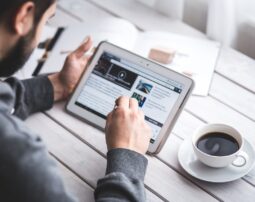What is physical education?
Physical education (PE) is an educational program that focuses on the development of physical fitness and the ability to perform and enjoy daily physical activities. It is a vital component of a well-rounded education, and its goal is to promote a lifelong interest in physical activity and healthy living. Physical education is typically taught in schools as a separate class or incorporated into other subjects such as science or health.
Physical education classes typically include a variety of activities such as team sports, individual sports, fitness activities, and games. These activities are designed to teach students the skills and knowledge necessary to engage in physical activity and maintain a healthy lifestyle. For example, students may learn how to play different sports such as basketball, soccer, and volleyball, as well as how to properly warm up and cool down before and after physical activity.
Physical education classes also focus on developing physical fitness. This includes activities that help students improve their cardiovascular fitness, muscular strength and endurance, flexibility, and body composition. For example, students may engage in activities such as running, jumping rope, and weightlifting to improve their cardiovascular fitness, or stretching and yoga to improve their flexibility.
Physical education classes also emphasize the importance of healthy living and the relationship between physical activity and overall health. This includes education on topics such as nutrition, stress management, and disease prevention. For example, students may learn about the importance of a balanced diet and the relationship between diet and physical activity, or how regular physical activity can help reduce stress and prevent chronic diseases such as obesity and heart disease.
Physical education also provide opportunities for students to develop social skills, teamwork, and sportsmanship. Physical education classes are often organized as team sports, which require students to work together to achieve a common goal. Through these activities, students learn the importance of cooperation, communication, and respect for others. Additionally, physical education teachers often emphasize the importance of sportsmanship, which includes being gracious in victory and defeat, and showing respect for opponents, teammates, and officials.
Physical education is also an opportunity for students to develop leadership and personal responsibility. Students can take on leadership roles in physical education class, such as team captain or fitness leader, and learn how to take charge and lead by example. Additionally, physical education class can provide students with the opportunity to develop personal responsibility by setting and achieving their own fitness goals.
Physical education is an essential component of a well-rounded education, as it promotes physical fitness, healthy living, and personal development. Through physical education, students learn the skills and knowledge necessary to engage in physical activity and maintain a healthy lifestyle, which can have a positive impact on their overall health and well-being. Additionally, physical education also provides opportunities for students to develop teamwork, sportsmanship, leadership and personal responsibility, which can help them succeed in many areas of their lives.
Unfortunately, in many countries, physical education programs have been cut or reduced in recent years due to budget constraints. In addition, many schools are struggling to provide adequate facilities and equipment for physical education classes. This can make it difficult for students to get the physical activity they need to maintain a healthy lifestyle.
Physical education is vital for the overall physical and mental well-being of students, as well as for the development of healthy habits that will last a lifetime. It is important for schools, educators, parents, and policymakers to work together to ensure that physical education remains a vital and integral part of the curriculum and that students have access to the facilities and equipment they need to engage in physical activity.




